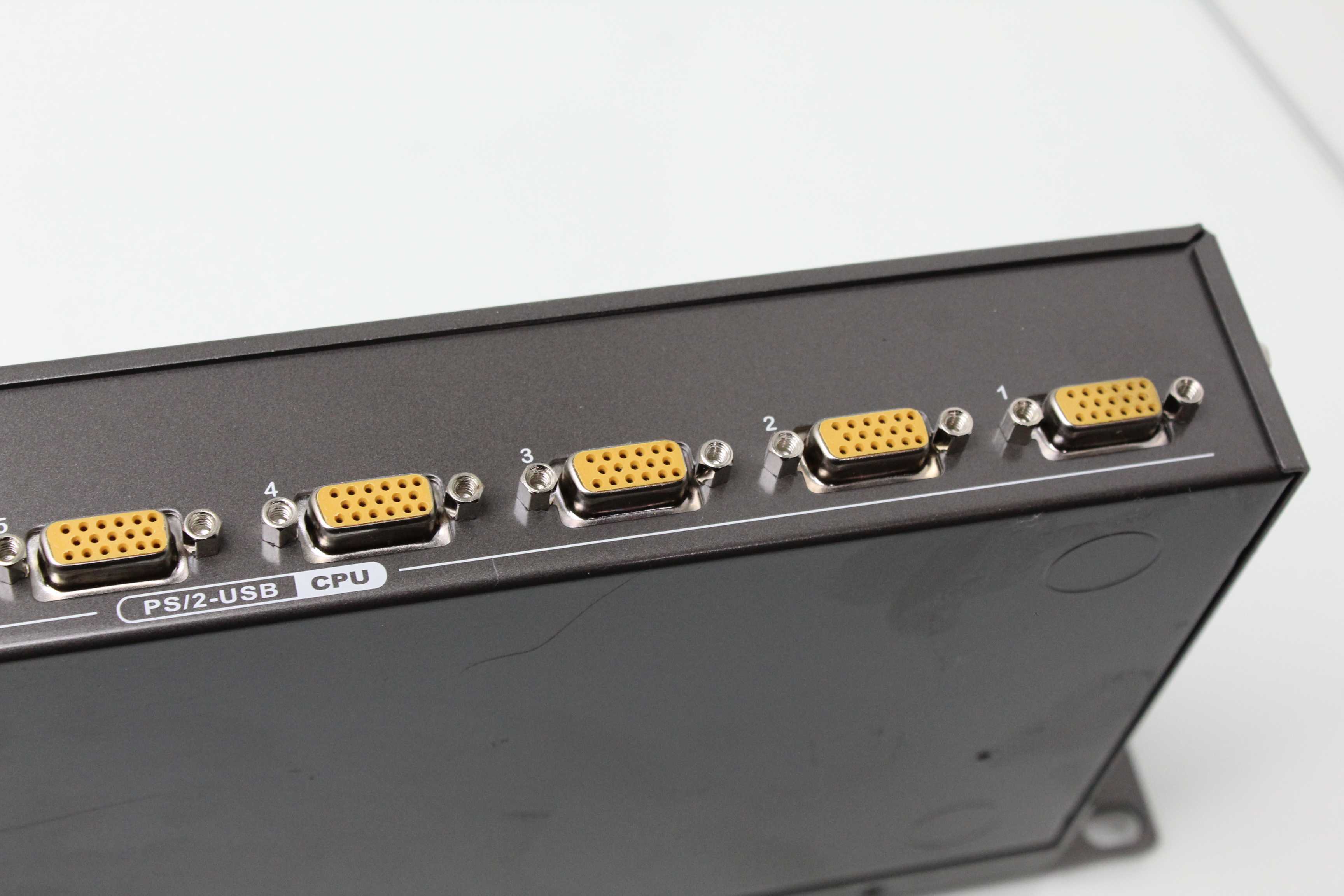

So I feel I have to switch at some point and a Socket 7 can't cover all my needs (which it obviously can for many of you guys here on Vogons!). 1024x768 at 60 fps (which I require today!). It always annoys me that the Socket 7 systems, while able to play some early 3D games can't run Dungeon Keeper 2, Unreal, Unreal Tournament in min. I mostly play 1996 to 2000 games so for me the slot 1 system is going to be the main machine. Enough CPU power for high resolution in late DOS 3D games.
TESTOUT LAB KVM SWITCH WINDOWS
Perfect for Windows 3D games like Unreal, Half-Life, Quake 3, etc etc Plays basically everything as long as its not speed dependent. Pentium III Tualatin 1400mhz, 1024MB of RAM, 160GB harddrive, GeforceFX 5950 Ultra with Artic Silencer, Matrox M3D (PowerVR PCX2), Voodoo2 12MB Won't be period correct for benchmarks/video capture.Ĩ. Still not powerful for 60FPS high resolutions in late DOS 3D games (though beginning to get there).

More space for the hardware and easier jumper access. Combines the features of the Socket 7 AT machine with a SS7 board. This system is not built as of today, but I can put it together using any parts I like. Can't change FSB/multiplier or cache settings.ħ. Compaq "problems", more unstable and more trouble than the other Socket 7 systems. High nostalgia value as it is my childhood machine. AMD K6-III 400mhz, Intel 430VX, 80MB of RAM, 32GB S-ATA SSD drive, S3 Trio 64+ 2MB (integrated), DVD-ROM, Voodoo2 12MB in SLI, PS/2 port, USB Hard to reach jumpers to change FSB and multiplier.Ħ.

No turbo button on case (only LED light). Still not powerful for 60FPS high resolutions in late DOS 3D games. 1996 period correct (except for harddrive).

Supports loads of first generation API's for capturing/benchmark purposes. Pentium 200mhz, Intel 430VX, 64MB of RAM, 3D Blaster PCI (or Matrox Mystique or S3 Virge), Apocalypse 3D (PowerVR PCX1), Orchid Righteous 3DFX, 18GB IDE harddrive, CD-RW drive, PS/2 port, USB (but no bracket). Hardware is of higher value and it is a higher risk it'll break with use, making me more cautious to use it for everyday use.ĥ. Turbo and cache settings don't slow down more than to 486 DX50 or DX66 levels. Similar in speed with the Socket 4 system and the games (mostly 3D games) that require more performance run better on the Socket 7 or 440BX system.
TESTOUT LAB KVM SWITCH PS2
PS2 mouse port which means it can be connected to the KVM switch and I can use my modern Logitech MX518 mouse. Best AT case I've got in terms of looks and features (turbo button, mhz LED, reset button, etc) Socket 3 Pentium Overdrive 100mhz, VLB system with S3 Vision 864 2MB, 3D Blaster VLB, 32MB of RAM, PS/2 port. Case does not have turbo button (can be changed in BIOS)Ĥ. Similar in speed with the Socket 3 system. Cache options in BIOS can't be modified by games (Looking at you Ultima VII!) Socket 4 Pentium 66 32MB of RAM, Tseng Labs ET6000 2MB PCI, 36GB Ultra320 68pin SCSI SILENT harddrive, 2x IDE CD-ROM, no PS/2 port. Built from all kind of parts, "not period correct".ģ. 386 DX33, 8MB of RAM, 64bit cache, ET4000AX 1MB, 8GB 50pin SCSI harddrive, 2x SCSI CD-ROM, no PS/2 port.
TESTOUT LAB KVM SWITCH SERIAL
No PS/2 port means that I need extra serial mouse connectedĢ. Can't disable cache in BIOS (need to use jumper) Placed in a desktop case, not mid-AT like the others which means it will take up more room. Increases nostalgia value that this isn't just something "Frankenstein" like the other 386. (can be overclocked to DX25 with jumpers). Zenith 386 DX20, 387FPU, 4MB of RAM, 64bit cache, 330MB SCSI harddrive, no PS/2 port. I've left out the soundcards as they can be swapped.ġ. I have an idea of what to use, but help me out here please 😉 I would like to cover all kinds of games from the late 80s to the start of 2000's. This means I could have up to 4 possible systems to use in this setup. My systems are nearing completion and I would like to set them up in a practical manner while also saving valuable space. I've gotten hold of a 4 port KVM switch (PS/2 and VGA) which I intend to setup.


 0 kommentar(er)
0 kommentar(er)
